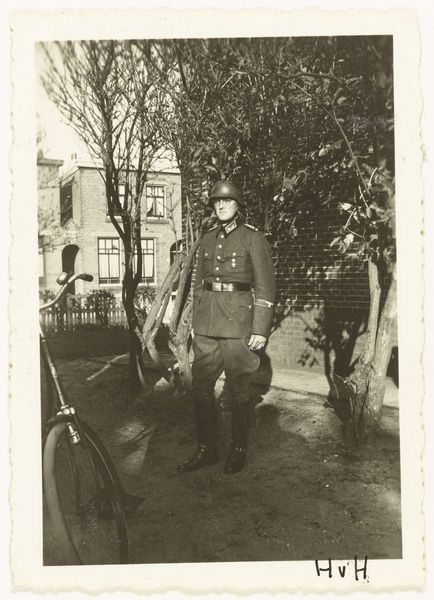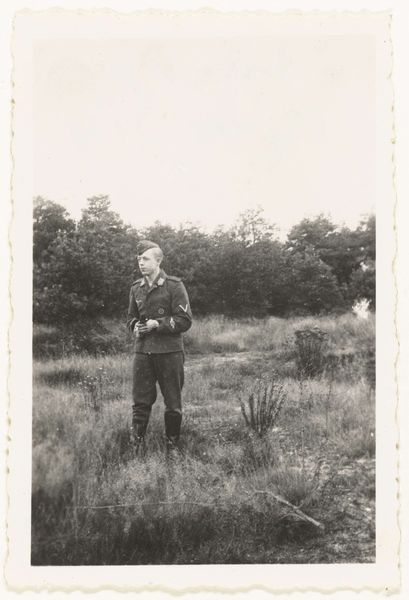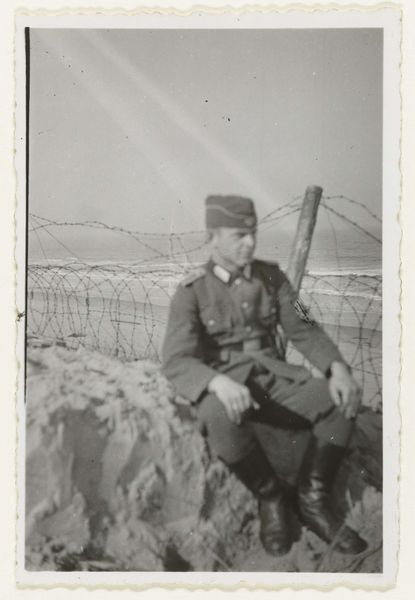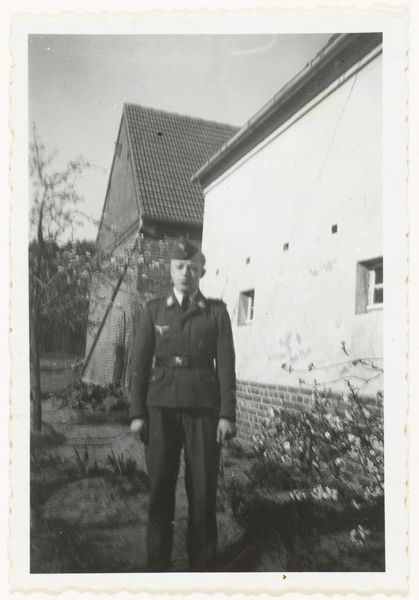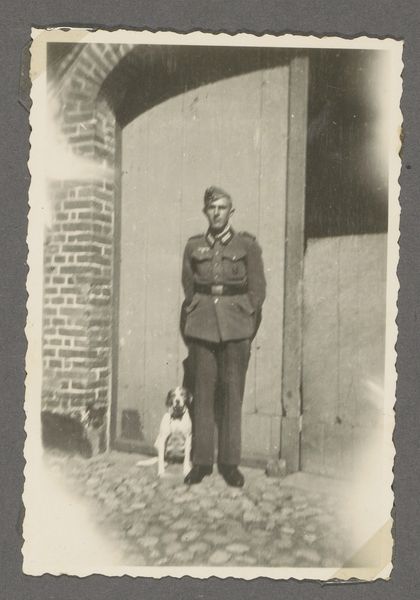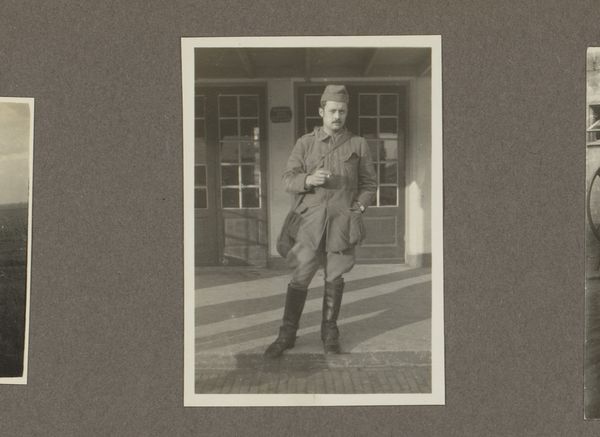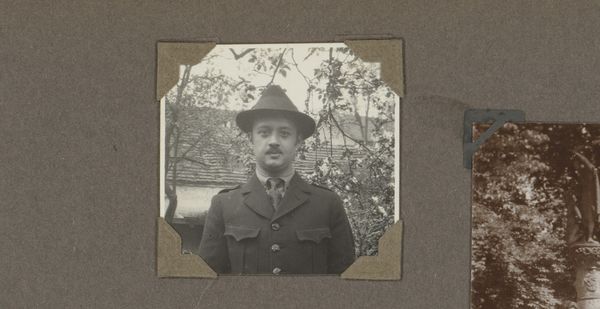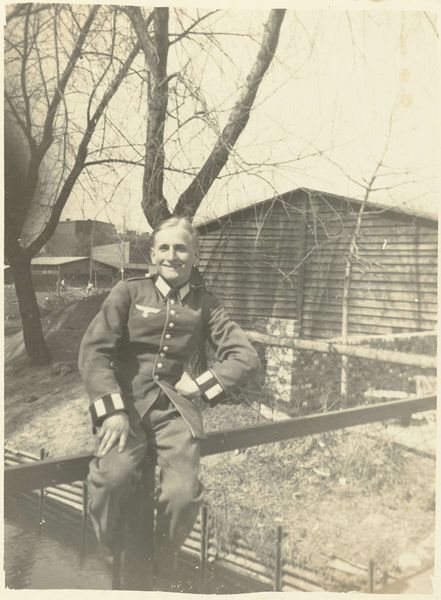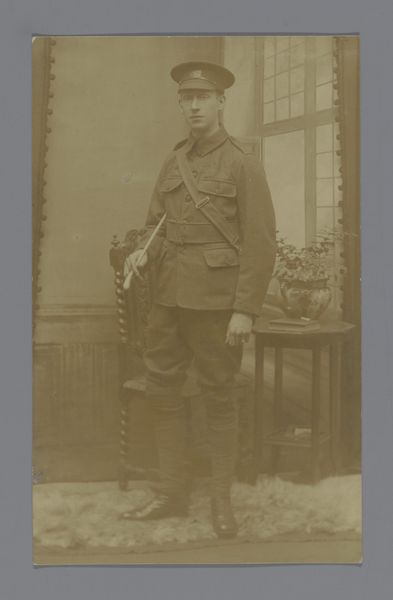
Dimensions: height 90 mm, width 61 mm
Copyright: Rijks Museum: Open Domain
Curator: The work before us, titled "Portret van een militair," roughly translates to "Portrait of a Soldier." It's an anonymous photograph taken sometime between 1941 and 1945 and part of the Rijksmuseum's collection. Editor: It strikes me as profoundly unsettling, in a quiet way. The grainy black and white and torn edges evoke a sense of fragility and a world drastically disrupted. The individual seems posed and oddly isolated despite the presence of the dense greenery behind him. Curator: Indeed. As an artifact of World War II, this photograph offers a chilling glimpse into the everyday life of those embroiled in the conflict. Its photographic realism starkly contrasts with the propaganda art being produced. Consider how the setting—seemingly ordinary, yet the soldier represents something far more sinister in our historical context. Editor: Exactly. He stands rigidly at attention in a sort of mundane tableau that is actually dripping with layers of ideological power and control. The unadorned style also has a particular resonance given it’s a portrait from the period of German Expressionism and also echoes certain aesthetics linked to the rise of Fascism and Nazism. It reminds us how quickly things normalized during a period defined by abnormality. Curator: Absolutely. His anonymity is also key. He represents not just himself, but an entire apparatus—a system in which individuals became subsumed, often complicit, in atrocities. It raises questions about the individual’s relationship to power structures, and how easily ordinary people get caught in extraordinary times, normalized with things like uniforms and photography. Editor: And I keep coming back to that fragile photographic quality. The torn edges and grainy image. It visualizes historical trauma – both collective and presumably intensely personal to that anonymous man. Curator: Precisely. By grappling with this image and understanding it, we also better see our reflection in it today. Editor: It leaves a lasting sense of responsibility to question the dominant narratives that exist within our world. Thank you.
Comments
No comments
Be the first to comment and join the conversation on the ultimate creative platform.
